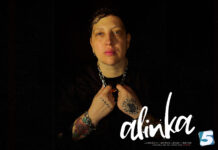
At first there were oddities — orphaned tracks that showed up in our submission box, seemingly made for dancefloors but not for DJs. They were clearly made in the style of contemporary deep house — 4/4, driven by a bassline, coming in at 120 to 125 bpms and propped up by a short vocal clip. The level of creativity that producers can generate from such a simple formula never ceases to amaze me. Five, ten, twenty or thirty years have failed to exhaust all of the possibilities, or even scratch the surface.
But what made these tracks odd was how short they were. Rarely did they top 4:00. You might assume these were radio edits (I did), but you can go everywhere Google can take you without finding the extended mixes they were based upon (again, I did). There are no intros for a DJ to blend into, no outros for a DJ to blend out of. They seem to be made with an aesthetic almost totally untouched by DJ culture altogether.
Ten or even five years ago, these tracks never would have existed. Today they probably make up the majority of new dance music released each week.
Ten or even just five years ago, these tracks never would have existed. Without Spotify, they probably still wouldn’t. What were once oddities, though, now likely make up the majority of new deep house (or techno, or other electronic music genres) released each week — but released almost exclusively for streaming on Spotify.
Much has been said about how Spotify has changed how producers arrange music and companies release it. Hooks or choruses often drop in the first twenty five seconds, for instance, which industry insiders say is necessary to capture a listener before they scroll to the next track. In radio days, an audience would be compelled to sit through it — like it or not, they had no choice.
Less has been said about how Spotify is changing electronic music and dance music in particular. Spotify doesn’t just eliminate the DJ as the conduit between artist and audience. Streaming music has cultivated a new breed of creators who seem to be totally in the dark about what a DJ does in the first place. As a result we have what’s almost a new format of music that broadly fits into the parameters of club music, but will almost certainly never be played in a club — or by any DJ at all.
I’m trying to wrap my head around why a producer would make 4/4 dance music but never release it in a format DJs could play. It’s a fundamental misunderstanding of what “the scene” actually is.
As I spoke to producers who make this stuff, I kept in mind that electronic music has a far wider audience than at any time in history. As Will Sumsuch wrote in 5 Mag a few years back, electronic music reaches cafés and book stores and a thousand other public spots that Ron Hardy never would have imagined:
Through and mostly because of streaming, Spotify has become essentially a worldwide Muzak machine. It follows users around, providing the soundtrack to life’s intermittent moments. When they’re dancing or studying, doing their makeup or their dishes, getting a haircut or buying kale, Spotify has become an interactive version of the supermarket music of old.
And I’m not denigrating electronic music that is made primarily for listening. It’s always existed, from the time there was a word for the genre.
With that said, it’s strange to me to hear a track with clear influence from Prescription Records or Larry Heard or Kerri Chandler or more likely Black Coffee or Charlotte de Witte but which has been released in such a way that playing it in a nightclub or by a DJ in a set is not just an afterthought but an impossibility. Every DJ has likely heard a pop song with a short intro or a dance track with one they didn’t like. They looped it, saved a copy and a new edit was made. A play-only format like Spotify makes this method obsolete; it can only be done through software (and by breaking the end user licensing agreement). Few bother. In reality few DJs will ever hear these tracks at all, since they are rarely uploaded to DJ-centric platforms like Beatport and Traxsource.
I replied to one producer who sent me a sampling of this kind of “Spotify House.” To avoid confrontation, I asked if there was an extended mix available. He told me that this was the extended mix — all 3 minutes and 37 seconds of it. Asked how DJs could play it, he stated that many DJs supported it, but admitted he hadn’t heard a mix or video of a DJ playing in the wild. Another producer explained that he sent WAV files to DJs when they asked; this had worked out well.
A third producer told me he played the music in his own sets, and didn’t want other DJs to play it. His sets (presuming he’s booked to play them somewhere) consisted entirely of his own music.
These are two parallel scenes. One has a lot of the listeners; the other has all of the DJs.
My guess is that most of these producers aren’t integrated into the scene (or grew up on EDM, where it was not unusual for DJs to appear at festivals playing mostly their own tracks). It’s entirely possible, and I think it’s even likely, that some of these producers are making these tracks in complete ignorance of how DJing works — and the DJ’s importance to how house music works.
Maybe it makes more sense against a timeline of Spotify adoption. Spotify had just 36 million users in North America in 2016 before it became nearly ubiquitous. Someone who was 15 years old then is 21 now and making their own music. Their first exposure to deep house or techno probably didn’t come from the clubs, but from Spotify. Their understanding of track formats was shaped by radio edits of club tracks on Spotify, which cut out the 60 seconds of drums at the start and the end. They bypassed a culture where music is made for DJs for a culture where music is made to please playlist curators and the algorithm itself.
If all of these tracks were bad I’d never bother about it. But as I said, some of them aren’t bad at all. Yet most “Spotify House” will never make it to Beatport or Traxsource or Bandcamp another platform where DJs go to browse and buy music. These are two parallel scenes. One has a lot of the listeners; the other has all of the DJs.
This isn’t a revolution, of electronic music being adopted by the masses. That happened a long time ago. It’s just electronic music that’s declared DJs superfluous, an inefficiency. Spotify’s algorithm is the DJ.
This is a problem, to the extent that a fairly large number of people who declare themselves making deep house and techno are doing so in ignorance of DJ culture, with music that is almost hostile to DJing. Mainstream media’s temporary fascination with house music culture is likely going to guide new fans to this parallel world rather than to the real thing. We’re at the quarter turn in a vicious circle, where more shit on Spotify leads to more shit on Spotify, which eventually drives that real thing out of the picture or at least makes it harder and harder to find.
But I’m going to be honest here. More than listening habits or cultural ignorance, it annoys me that there are people — creative people, people with heart and brains — people who make dance music for Spotify and think that’s all there is or even all that they want there to be. That this sterile platform that sucks the money and soul from music and musicians is where this beautiful thing made in clubs by misfits and outlaws scorned, oppressed and hated by society now lives. That people won’t know the art, the craftsmanship, the central role of a DJ in creating a community that lasts until the soundsystem dies. Or that it’s all just muzak in the end.
There’s more inside 5 Mag’s member’s section — get first access to each issue for a few bucks a month.
Photo by @felipepelaquim on Unsplash























Nice read, funny thing is on our label we do the exact opposite. Since we release wax, we often ask the producers to extend a bit the intro/outro so that the tracks can be played in club straight from the wax without the loop function 🙂